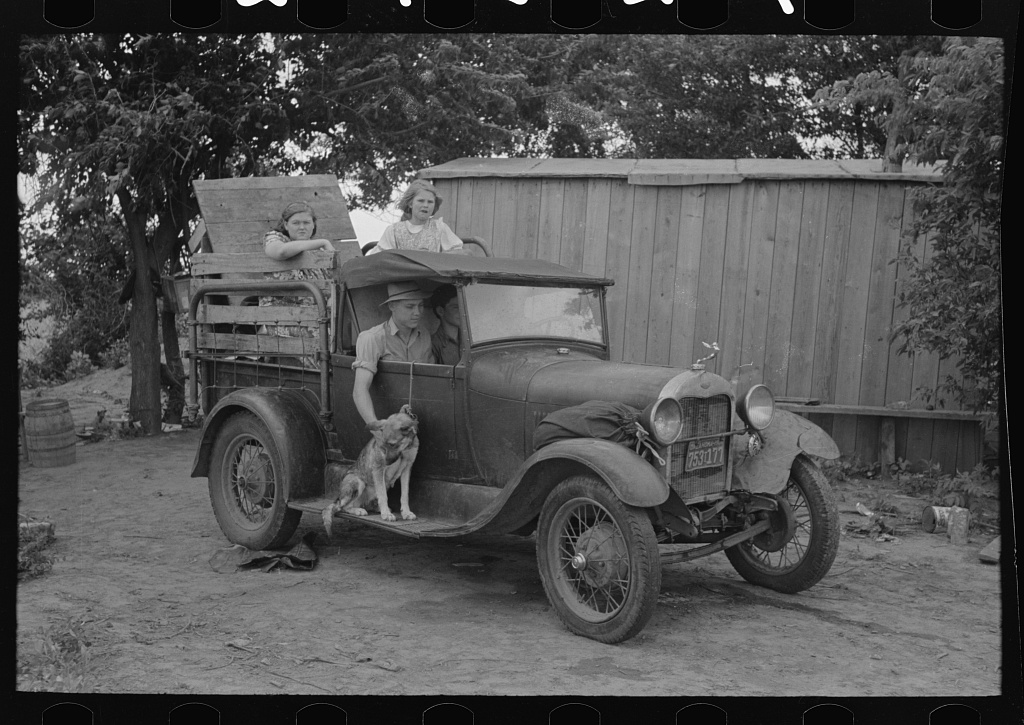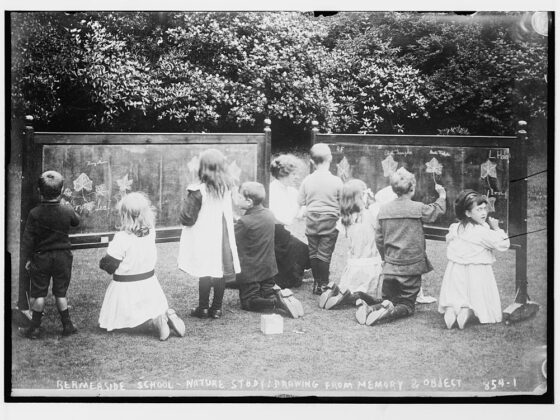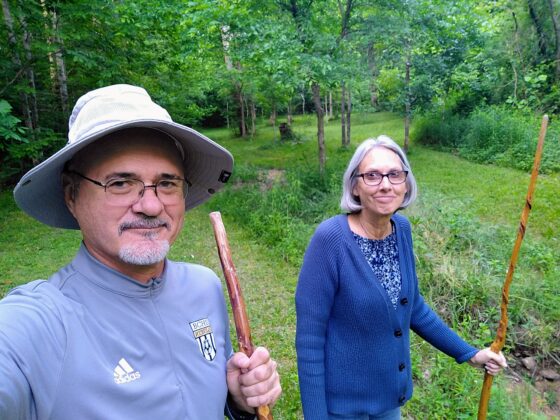Every day shapes every society. But certain periods stand out in history, because of the speed and scale of the changes wrought in people’s mark upon the land. For the U.S., we have the 1880s and 1890s, when immigrants poured into the big East Coast cities, and farmers, ranchers, homesteaders, and entrepreneurs moved further west.
And the 1910s and 1920s, with the great Black migration from the likes of Mississippi and Alabama to the likes of Chicago and Detroit. And the 1930s, with the migration from the Dust Bowl to anywhere else. And the 1950s, with the post-World War II creation of suburbia and the California boom.
We’re living through another such era. We can’t yet know how Covid, climate emergencies, volatile real-estate prices, and other disruptions will change the patterns of American settlement. But it would be impossible for them not to have a profound effect.
Here are a few items that bear on the changes and our efforts to understand them even as they are taking shape. These news stories, essays, and reports all deal with the (now-unanswerable) question of how the United States will look different after the pandemic—economically, socially, politically, geographically.
1) From Derek Shearer — an author, a former U.S. Ambassador to Finland, and a longtime professor at Occidental — a powerful and insightful article called “American Renewal After the Pandemic,” published by the Clinton Institute at University College Dublin.
We’re naturally partial to this article because of its generous mentions of the Our Towns Civic Foundation. But I think its real importance is suggesting the decades-long modern struggle to connect local- and state-level innovations to the largest, and often most intractable-seeming, challenges at the national and global levels.
Part of the background, from Derek Shearer:
As the country slowly emerges from the Covid-19 pandemic, is there hope for building a better, fairer, and more productive America—for citizens to connect on a community level beyond culture wars and Trump-inspired conspiracy theories?..
In 1984, I received a grant from the Guggenheim Foundation titled “Learning from Ourselves” for travel to cities across the country to examine case studies of citizen participation and urban reform. In the ’80s, I was also a co-founder of the Conference on Alternative State and Local Policies, which sought to bring together activists to share ideas and strategies about political and economic reform. Our first gathering was hosted by Paul Soglin, the young liberal mayor of Madison, Wisconsin, and his deputy, former investigative journalist, Jim Rowen.
In subsequent annual meetings, we brought together elected officials, administrators, community activists and policy thinkers from mid-sized California cities like Berkeley, Santa Monica, Santa Cruz, Santa Barbara, and Davis; from mid-west cities like St. Paul and from Chicago and Detroit with mobilized Black communities; from northeast cities like Hartford, Connecticut and Burlington, Vermont that had elected an insurgent community organizer named Bernie Sanders as mayor; and from southern towns like Austin, Texas where populist Jim Hightower had been elected state agriculture commissioner. It felt like a democratic wave was spreading across the country at least among our generation.”
What happened after that nascent wave is part of the story Derek Shearer tells in this post and in his other works. We’ve argued many times that a similar wave could and should be forming now. Improving prospects for its success is the ongoing theme here.
While I’m at it, and on the theme of local alternatives to embittered national politics, last month Chris Walsh and William McKenzie, of the George W. Bush Presidential Center, in Dallas, spoke with Deb Fallows and me about the ways local institutions, in particular libraries, can enhance the “sense of us.” We enjoyed talking with them; the interview is here, on the Bush Center’s site.
2) From Tom Ruby, of Blue Grass Critical Thinking Solutions, an essay on how the Covid disruption and the climate emergency may affect decisions about where Americans live and work. Ruby is a retired Air Force officer and strategist who now lives in small-town Kentucky. He refers to a “What to Expect in 2030” forecasting article he wrote just before the pandemic, and argues that the pandemic has made one of its elements more likely. The forecast was:
“… that as a consequence of the other predictions in the original 2020 article, namely persistent surveillance, shrinking middle class and global demographic changes, there will be a move by an initially small, but growing group of people to step away from the current culture and form deliberate communities based on traditional practices and social values.”
You can read more of Ruby’s post to get the full story. Of course the idea of self-selected, “values-based” communities has a very long back story in American life. European settlers arrived for various reasons, including this, from the 1600s onward; one of the big themes in 19th century U.S. history is the flourishing of Utopian communities.
But Ruby argues that among the dislocations of this era we can expect more of this geographic and cultural self-selection. We’ll watch and see.
Related on this theme: “Small Town Natives are Moving Back Home,” from this spring by Grace Olmstead, in the WSJ; and, by Adele Peters in Fast Company, a report on how changes in big-city real-estate markets could foster the growth of “15-minute cities.” As Peters puts it:
“The typical American business district is antithetical to the concept of the 15-minute city, which provides all your basic needs within a 15-minute walk or bike ride. Office buildings are segregated in one neighborhood, and most workers end up commuting by car.
But if some office buildings stay empty post-pandemic, a portion of that space could be turned into housing, creating a mixed-use area out of a neighborhood that previously had only one use.”
Will either prediction come true? If the contradictory history of American life is any guide, it’s possible both will—with different intensities, on different timetables, in different parts of the country. The question is which will be the trademark pattern of these times—or whether something else altogether will.
3) And when it comes to the forces changing where people live, and why, two recent reports are worth reading. One, from Miriam Jordan in the New York Times, mentions a pattern we’ve reported on from Erie in the east, to Dodge City in the central plains, to Fresno in the west. That is the importance of migrants—from the rest of the country, but especially from the rest of the world—in reviving cities that have suffered economic or social setbacks.
The Times story centers on the (now thriving) city of Bentonville, Arkansas, home base of Walmart. But even there—or perhaps especially there, given the pace of growth—new arrivals have played a disproportionate part. As the story’s headline says, “Decline in Immigration Threatens Growth of Regions on the Rise.” It’s worth reading in full.
The other report, from the University of Minnesota Extension, is on what it calls the “Rural Brain Gain Migration.” Precisely because its findings are so contrary to most rural-exodus / brain-drain reports, they are worth considering.
Here are the “Key Research Findings” of the Minnesota report:
- “The population of residents ages 30 – 49 years old has increased in rural Minnesota counties.
- “These newcomers have significant education, skills, connections, spending power, and children.
- “People migrate to rural communities for 1) a simpler life, 2) safety and security, 3) affordable housing, 4) outdoor recreation, and 5) quality schools.
- “Communities can work together to attract newcomers and create a quality of life that all residents enjoy.
In The Economist, the latest “Lexington” column has a report from a place we know well. That is Lubec, in far Down East Maine, immediate neighbor of Eastport, which we have written about extensively. The Economist column, by our long-time friend (and former Atlantic editor) James Bennet, is titled “There Goes the Neighbourhood [sic].” The subtitle conveys the point of the story: “What Is Lost When National Politics Eats Everything.” (If you’re counting, this is item #4.)
The piece begins, in its uncensored way:
“These days national politics follows everyone everywhere in America. So the visitor should not be surprised to spot a particular red-white-and-black flag hanging from a pine tree along a road into town. ‘Fuck Biden,’ it reads. ‘And fuck you for voting for him!'”
The piece goes on to discuss the long, far-from-idyllic tension between local and national emphases in American life. (Which is also the subject Derek Shearer deals with). Recommended.
5) As a last entry for today, a nice essay by our friend John Miller, who in writing and film has chronicled the story of Moundsville, West Virginia, but who recently returned to Belgium, where he grew up. His piece is on “Belgitude,” and I’ll let him explain what that means.
People looking back on our times, with a decade’s or a generation’s perspective, will think the answers to a variety of questions were fated, or obvious. Will people flock back to the offices, restaurants, and stores of the biggest cities, as if the shocks of the past 18 months were forgotten? Will they return to those major centers—while voting with their pocketbooks, and their ballots, for changes that could include the “15-minute city” pattern of life? How many people will choose new locations based on each city’s response to Covid? Its degree of openness to—or obstacles for—immigrants and other new arrivals? Its mundane-but-crucial features like broadband access and real estate costs? Or its self-selected “communities of value,” as Tom Ruby suggests?
As with so many other aspects of this era’s life—environmental, economic, political—we can’t know the answer. But by our daily choices and efforts, we shape what the answers will be.




